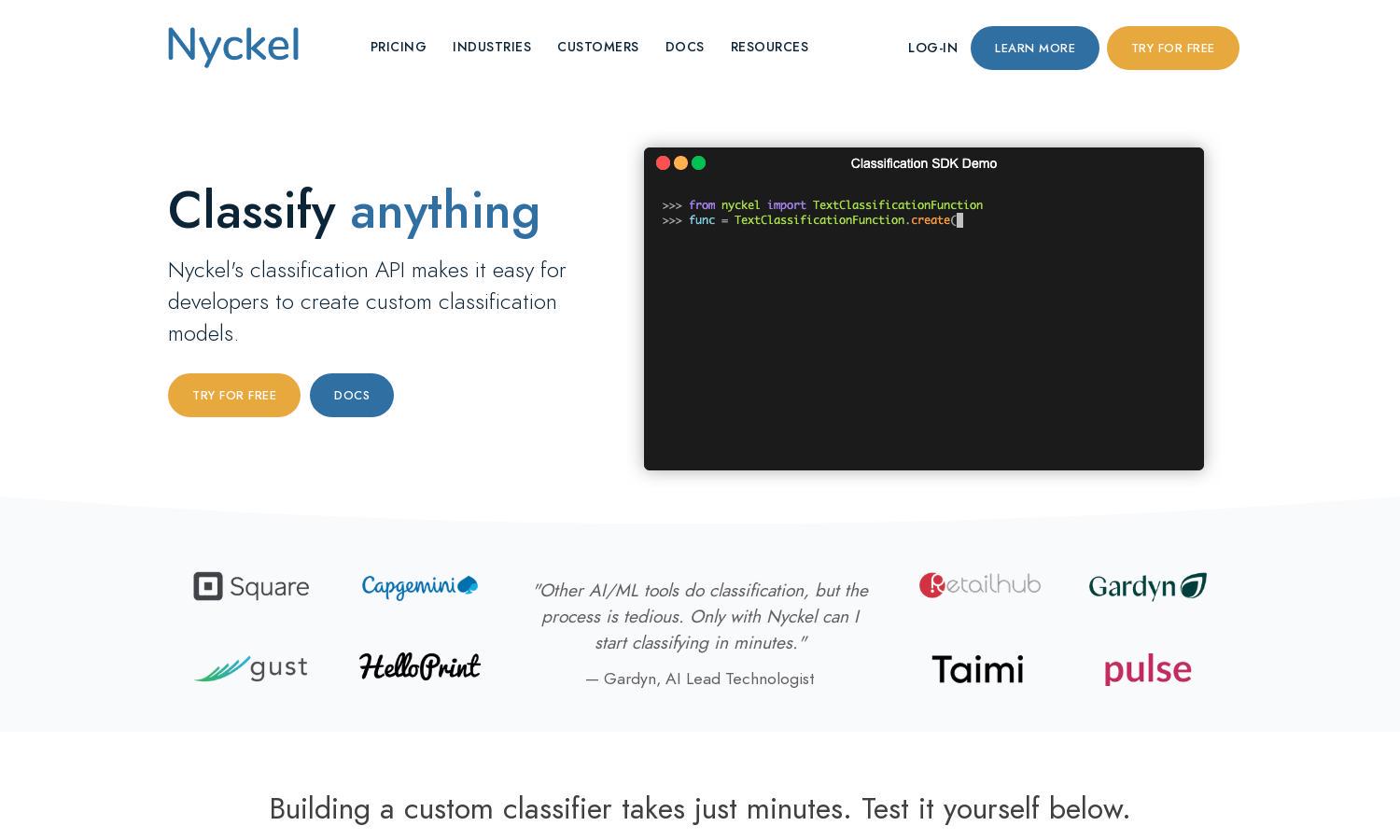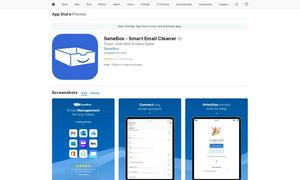Nyckel

About Nyckel
Nyckel is a cutting-edge platform that empowers developers to create custom classification models effortlessly. By using its intuitive API, users can train models on their data or leverage pretrained classifiers to categorize images and text efficiently. Nyckel focuses on simplifying machine learning for innovative solutions.
Nyckel offers flexible pricing plans tailored to user needs. Users can start for free and access various tiers based on their usage, benefiting from automatic retraining and pay-per-request features. Upgrading ensures enhanced model performance and greater access to advanced classifiers for more demanding projects.
Nyckel's user interface is designed for a seamless experience, featuring an intuitive layout that makes navigating features easy. Its organized dashboard allows users to effortlessly manage their models and monitor incoming requests, making it user-friendly and efficient for both beginners and experienced developers.
How Nyckel works
Users begin their journey with Nyckel by signing up for an account and exploring the dashboard. They can upload their own data or select from pretrained classifiers to start classifying their content. The platform allows real-time monitoring of requests and automatic retraining of models, ensuring an easy yet effective user experience.
Key Features for Nyckel
Custom Model Training
Nyckel's standout feature is its ability to facilitate custom model training in just minutes. By seamlessly integrating user-uploaded data, Nyckel allows for quick deployment and real-time updates via an intuitive API, making it accessible for developers aiming for efficient model creation.
Pretrained Classifiers
Another valuable feature of Nyckel is its extensive library of pretrained classifiers. Users can quickly access and implement these models to categorize data without the need for extensive training, significantly reducing setup time. This feature enhances productivity and accelerates project timelines.
Real-Time Monitoring
Nyckel’s real-time monitoring feature allows users to track incoming requests seamlessly. This functionality offers insights into usage patterns and enables the annotation of samples to improve accuracy, ensuring that models remain relevant and effective in classification tasks, which enhances user experience.







